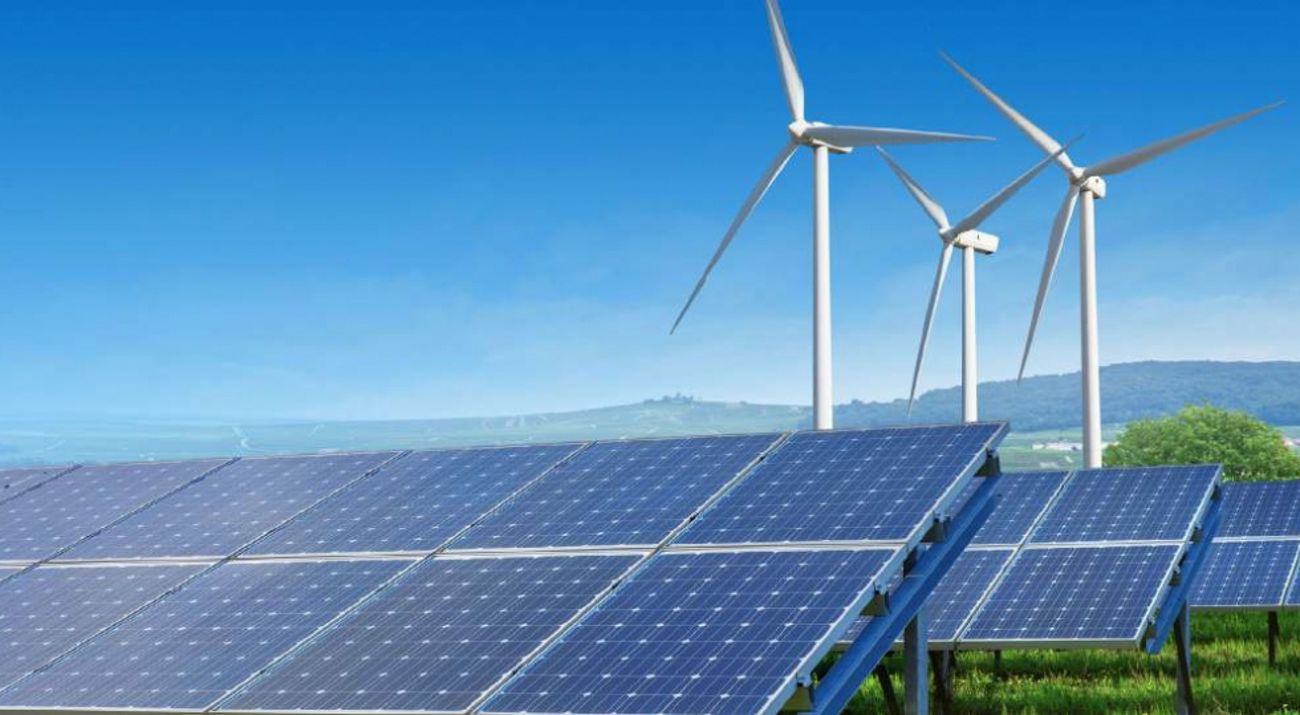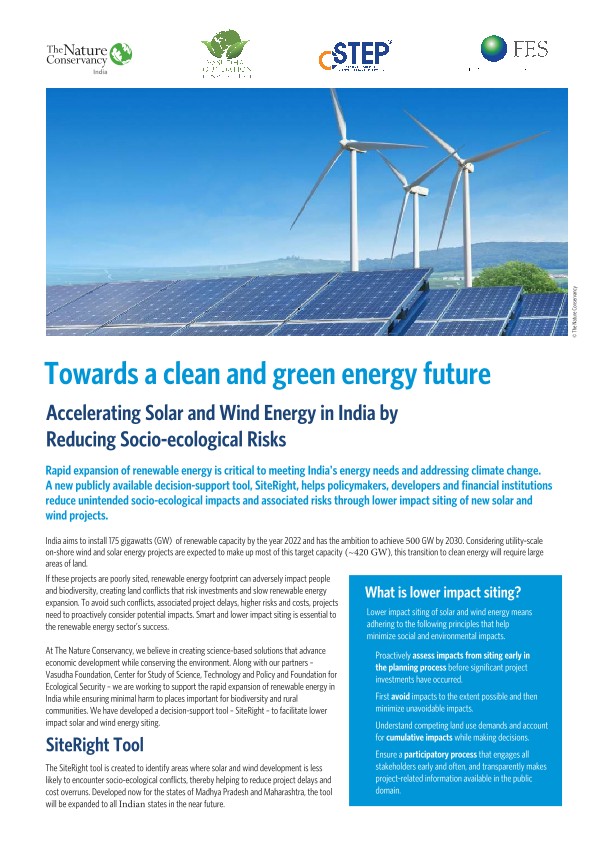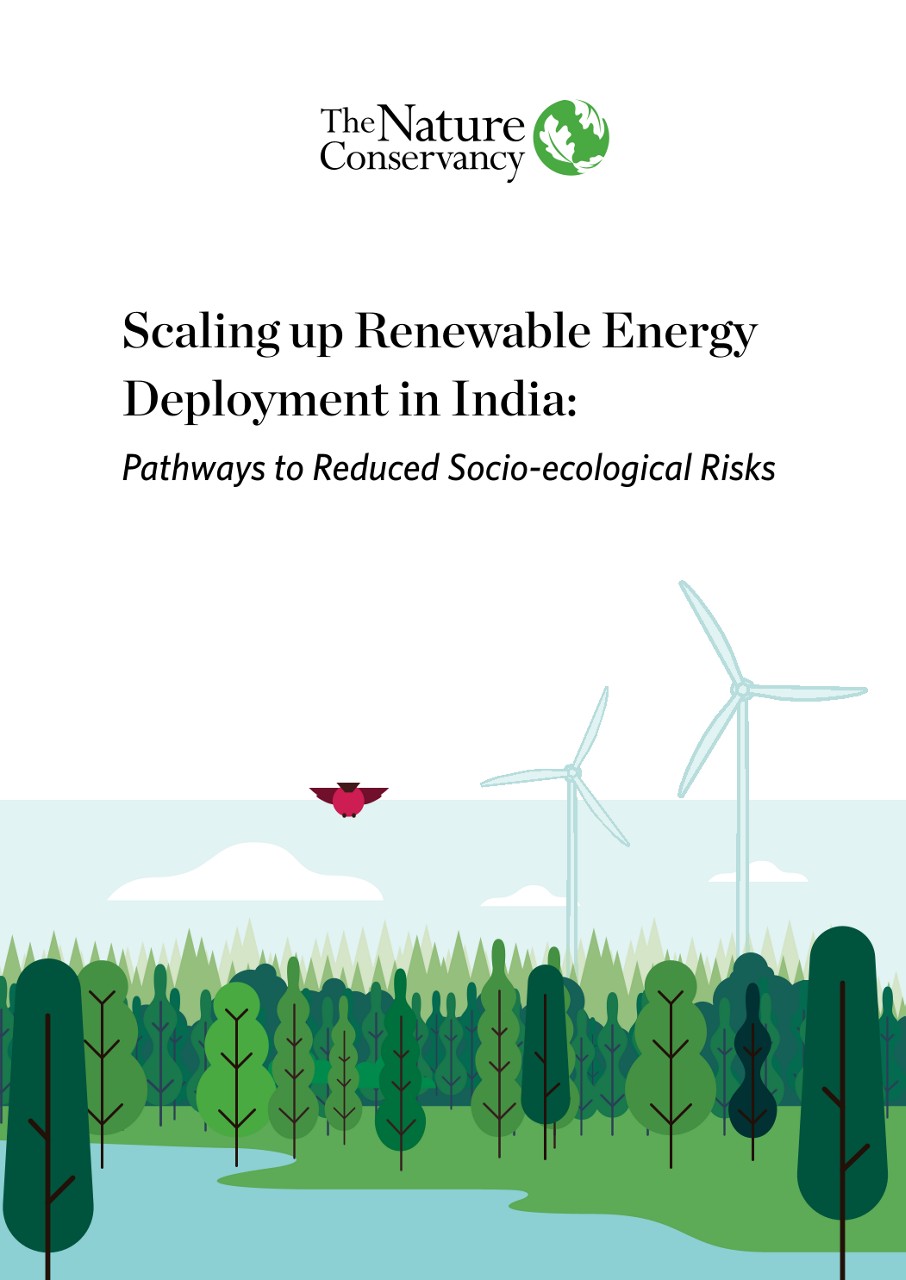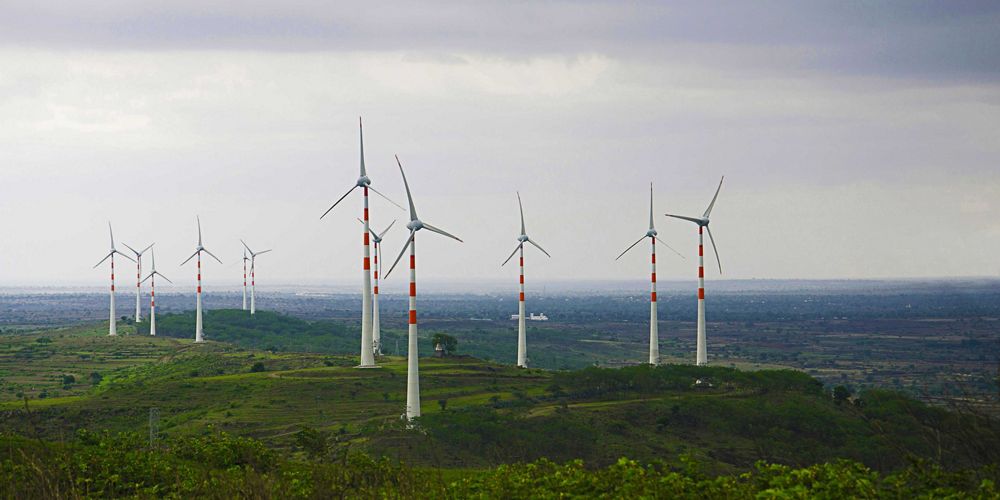Rapid deployment of renewable energy (RE) sources, particularly solar and the wind is critical for India to meet its rising energy demand while mitigating climate change. At the last climate summit in Glasgow (COP26), Prime Minister Narendra Modi announced enhanced climate targets for India, including increasing its non-fossil energy capacity to 500 GW and meeting 50 percent of its energy requirements through renewable energy by 2030. Along with these commitments, India announced its intention to achieve net zero by 2070. Of the committed RE target by 2030, wind and solar alone are expected to contribute 420 GW. As of September 2022, India’s installed renewable energy capacity stands at ~ 161 GW.
Without careful planning, given the large land footprint projected to meet renewables energy targets—typically three to 12 times that of coal-powered energy generation—can adversely impact people and biodiversity, creating land conflicts that will jeopardize investments and slow RE expansion.
A study conducted by The Nature Conservancy (TNC) and the Center for Study of Science, Technology, and Policy (CSTEP) shows that India can meet its renewable energy target of 175 GW by 2022 by more than 10 times by placing RE infrastructure on lower impact lands. However, if maximizing energy production is the singular aim for RE projects, more than 11,900 km2 of forest and 55,700 km2 of agricultural land could be impacted. Further, the retrospective analysis conducted by The Nature Conservancy (TNC) and Microsoft revealed that approximately 68% of existing solar projects in India are sited on agricultural land and approximately 7% of projects on natural ecosystems, highlighting the potential impacts of renewable energy projects to biodiversity, community livelihoods, and future food security if not planned responsibly.
RE projects need to be sited responsibly and smartly to avoid land conflicts, associated project delays, higher risks, and costs. The Nature Conservancy (TNC), Vasudha Foundation (VF), Center for Science, Technology, and Policy (CSTEP), and Foundation for Ecological Security (FES) have collaborated to create a tool—SiteRight—to support decision makers make better siting choice
The SiteRight tool identifies areas where solar and wind development is less likely to encounter socio-ecological conflicts, thereby helping to reduce project delays and cost overruns.
SiteRight uses the best available information to support early screening and inform siting decisions. It should be one of the sources of information to be considered when taking siting decisions. The tool is NOT intended to replace the need for a site-level assessment of impacts or consult relevant agencies before making siting decisions.
Awareness Module
Provides information on the extent of potential ecological conflicts and how much room there is to avoid these.
Site Assessment Module
Provides an assessment of potential sources of conflicts across ecological and social variables for a user-defined area.
View the tool for various Indian states and the instructional video below.
- Madhya Pradesh
- Maharashtra
- Telangana
- Tamil Nadu
- Karnataka
- Gujarat
- Rajasthan
- Andhra Pradesh
- Uttar Pradesh
Planning Module
Helps identify low-conflict parcels to meet your solar / wind energy goal. View the Planning Module tool for various Indian states and the instructional video below.
Download
News and Updates
-
SiteRight featured in IUCN Report
Mitigating biodiversity impacts associated with solar and wind energy development. Read the Report
-
SiteRight featured in World Economic Forum Report
New Nature Economy Report II: The Future of Nature and Business. Read the Article
-
Article in Journal Sustainability
Renewable Energy and Land Use in India: A Vision to Facilitate Sustainable Development. Read the Article
-
Article on SiteRight in Bastion
Dialogues: Dhaval Negandhi on Siting Renewable Energy Projects Sustainably. Read the Article
-
Article in Nature Scientific Data
An Artificial Intelligence Dataset for Solar Energy Locations in India. Read the Article
-
Article on low impact renewable energy siting
Degraded Lands can Aid Achieve Four Times India’s 2030 Renewable Energy Targets. Read the Article
-
Article on renewable energy impact in Policy Circle
Unplanned Renewable Energy Drive Threatens Food security, Biodiversity. Read the Article
-
AI to Understand Solar Energy’s Impact in India
The land use pattern of solar energy development in India covered in Cool Green Science. Read the Article
Disclaimer
This tool and all associated data, information, maps, analysis and results are meant for illustrative purposes only. The Nature Conservancy, Center for Science, Technology and Policy, Foundation for Ecological Security and Vasudha Foundation assume no responsibility and/or liability whatsoever for any interpretation of data, any investment decisions, or actions resulting from the represented information or analysis. We do not make any claims about the authenticity and/or veracity of the datasets used, and strongly recommend that the results are verified and cross-checked at ground-level before any decisions are made.










